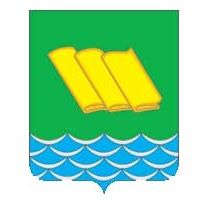Sobinka

The town of Sobinka is the administrative center of the Sobinka district in the Vladimir region with a population of 18 232 people (2016). It is located 37 km southwest of Vladimir on the Klyazma River, in the northwestern part of the Meshchera Lowland.
History
The impenetrable forests and peat bogs of the local Meshchera places determined the mentioning in the sources of the 17th-19th centuries the settlement here as Sobinskaya (Sobinaya, Sobennaya) wasteland. This name, according to one version, comes from the widespread in this area male name Sobin. Another version seems more plausible: "osoby" ("special") means "separate", "separated". These places, separated by forests, it was difficult to master.
Only from the middle of the 19th century, with the construction of the Moscow-Nizhny Novgorod railway, opportunities for more intensive industrial development of the adjacent territories were opened. In 1856, the natives of a peasant family, the brothers Matvey and Luka Losevs, bought out a plot of Sobinskaya wasteland from its owner, earl A.N. Zubov for 2500 rubles in silver. Possessing an extraordinary entrepreneurial nous, they decided to build a textile factory here: next to it – a forest, a river, a railway, a lot of cheap labor in the surrounding villages. Business ties allowed them to deliver from England equipment for the factory, as well as half a dozen masters to guide construction and production. American and Bukhara raw materials (cotton) were purchased at the Nizhny Novgorod fair. In 1858, the factory started production.
Together with the factory, the workers' village also developed: first wooden and then brick barracks were built for the workers (these "corridors" have been preserved to this day as residential houses), a hospital, a school, even the Church of the Resurrection of Christ (in the building of the former church is now located secondary school number 1). In the 1860s, a floating bridge was built across the Klyazma and a stone road from the factory to Undol railway station. The Partnership of Sobinka Manufactory was formed, in which, besides the Losevs, the owners of textile enterprises Nikitin, Mindevsky, Bakin entered. Luka Vasilyevich Losev was elected director of the board of the Partnership.
So from the Sobinskaya wasteland unknown to anyone, a large factory settlement Sobinka was formed. In the years 1907-1910, a new three-story factory was built. Sobinka Manufactory became one of the largest enterprises of the Vladimir province.
In 1918 the Sobinka textile factory was nationalized. In the 1920s, production expanded, the old English equipment was replaced by domestic one. In 1922 the factory received a new name – "Communist vanguard". In 1923 an unusual cultural event occurred: a monument to Karl Marx, one of the first in the country (on the occasion of the 105th anniversary of his birth), was opened in Sobinka on the means collected by textile workers. It is still a showplace of the town.
In 1939 the workers’ village Sobinka receives the status of the town.
The development of the town was interrupted by the Great Patriotic War. About three thousand inhabitants of Sobinka went to the front, almost half of them did not return from the war, two became Heroes of the Soviet Union (A.K. Tarasov and A.V. Shibaev).
With the formation of the Vladimir region in 1944 Sobinka moved to its composition from the Ivanovo Industrial region, to which it belonged since 1936. In 1963, Sobinka received the status of a town of regional subordination. In 2008, from the town of regional subordination it was transformed into the administrative center of the Sobinka district.
Economy
Among the important events of the postwar period was the commissioning of a new weaving factory (1955), which gave an increase in the production of cloth by three times (today it is Ltd "Sobinsk Textile", which experienced great economic difficulties in the 1990s, a branch of the Gorodishchensky finishing factory, producing cotton fabrics and gauze). During this period, a garment factory in the southeastern part of the city also appears, near which a new microdistrict has grown up.
The basis of Sobinka's economy, as in former times, today is weaving and garment production. Two large factories on tailoring clothes (mainly working and sports) now operate in the town. It is no coincidence that, therefore, the coat of arms of the town, adopted in 1997, depicts three cuts of gold fabric, symbolizing light industry in its continuous development – from the past, through the present, into the future.
In addition, a large confectionery factory "Bolshevik", which specializes in the production of flour confectionery, was transferred to Sobinka from Moscow by its new owner – Kraft Foods.
In the village of Vorsha in Sobinka district, a high-technology confectionery factory called Ferrero, which produces famous Kinder Surprises, Kinder Chocolate, candies Raffaello and others, has been operating for almost ten years.
Famous people
In the town of Sobinka, famous artists, members of the Union of Artists of the USSR were born: K.N. Britov (1925-2010), People's Artist of Russia, one of the founders of the original direction in Russian painting – "Vladimir landscape", featuring decorative, bright color combinations, emotionality, optimism and love for his native land; V.D. Kalinin (1924-2007), specializing in the artistic design of fabrics (tapestries, curtains, plaid) and also created a series of landscapes dedicated to the Vladimir land.
In the village of Cherkutino, the Sobinka district, M.M. Speransky (1772-1839) was born – an outstanding statesman and politician, who led the reformist activity of Emperor Alexander I, the author of the draft of the first Russian constitution, the law-giver; under Emperor Nicholas I Speransky headed the work on compiling a complete set of laws of the Russian Empire, laying the foundations of theoretical jurisprudence.
Great interest for tourists is the memorial House-museum estate of the founder of practical, theoretical and experimental aerodynamics N.E. Zhukovsky – in the village of Orekhovo, the Sobinka district.
 Tourism portal of the
Tourism portal of the